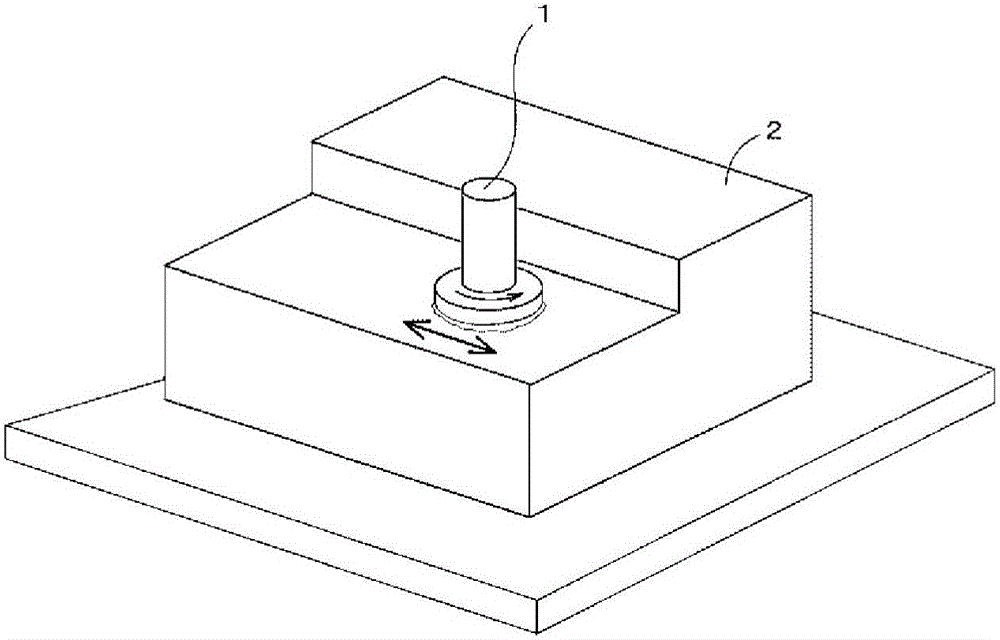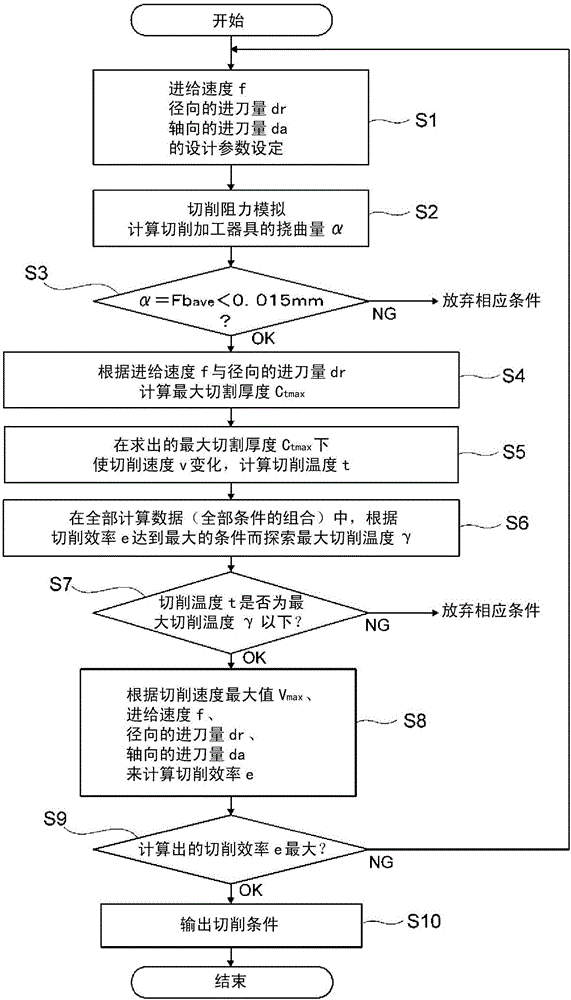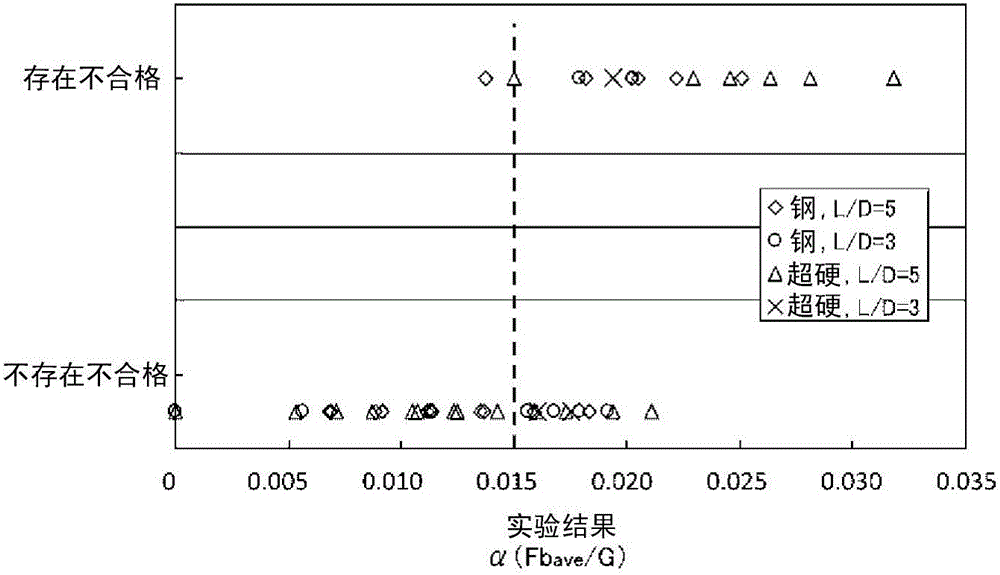Method for designing cutting conditions for cutting
A technology of cutting processing and cutting conditions, applied in the design field of cutting conditions, can solve problems such as impractical, unrealistic, and energy-consuming, and achieve the effect of easy design and vibration prevention
- Summary
- Abstract
- Description
- Claims
- Application Information
AI Technical Summary
Problems solved by technology
Method used
Image
Examples
experiment example
[0105] Next, using the method of designing cutting conditions in cutting according to the present invention, experimental results in which cutting conditions are designed will be described.
[0106] As the cutting tool 1 used in this experiment, an end mill tool with a tool diameter of 30 mm, a cutting edge of R0.8 mm, four blades, and a protrusion length of 150 mm was prepared, and as the workpiece 2, S45C carbon steel was prepared. (Carbon steel for machine structure: JIS G 4051 (1979)). Then, an experiment was performed on design of cutting conditions and optimization of cutting conditions when cutting S45C carbon steel, which is the workpiece 2, using the above-mentioned end mill tool 1 .
[0107] As a result of applying the design method of cutting conditions, it is calculated that the feed rate f of the end mill tool 1 is 197 mm / min, the radial feed amount dr is 7.5 mm, and the axial feed amount da is 102 mm. The speed is 4918rpm, and the twist angle is 60 degrees.
[...
PUM
 Login to View More
Login to View More Abstract
Description
Claims
Application Information
 Login to View More
Login to View More - R&D
- Intellectual Property
- Life Sciences
- Materials
- Tech Scout
- Unparalleled Data Quality
- Higher Quality Content
- 60% Fewer Hallucinations
Browse by: Latest US Patents, China's latest patents, Technical Efficacy Thesaurus, Application Domain, Technology Topic, Popular Technical Reports.
© 2025 PatSnap. All rights reserved.Legal|Privacy policy|Modern Slavery Act Transparency Statement|Sitemap|About US| Contact US: help@patsnap.com



